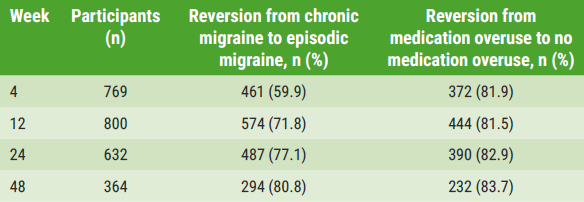https://doi.org/10.55788/84e80329
About 30% of patients with trigeminal neuralgia are refractory to pharmacological treatment, which makes them eligible for surgical treatment. The proportion of patients that responds to medical and surgical treatment is variable. This observational and retrospective study aimed to identify prognostic factors and predictors of response to medical and surgical treatment in classical and idiopathic trigeminal neuralgia.
This single-centre study, presented by Dr Joan Miquel Fernández-Vidal (Hospital de la Santa Creu i Sant Pau, Spain) included patients from the Sant Pau Hospital in Barcelona with classical (n=89) and idiopathic (n=104) trigeminal neuralgia. The median age was 64 (range: 22–93) years; 67% were women.
There were 125 patients who received medical treatment. After a follow-up of ≥2 years, 74 (59%) responded to this treatment. Older age seemed to predict a positive outcome (OR 1.04; 95% CI 1.00–1.08; P=0.033). Of 47 patients treated with microvascular decompression, 40 (87%) had a good outcome. A higher number of previously used drugs significantly predicted poor response in this group (OR 0.49; 0.26–0.91; P=0.026). There were 26 patients who were treated with radiofrequency thermocoagulation, 16 of whom (60%) showed a good response. The presence of pain in V2-V3 was associated with a good response in this treatment group (OR 16.2; 1.56-167.7; P=0.02). Finally, 16 patients were treated with balloon compression, of whom 13 (81%) had a good response. No predictors of good response were found in this treatment group.
Limitations of this study were its small sample, retrospective and single-centre design, and the imprecise assessment of response, as validated scales are not used in daily practice.
- Fernández-Vidal JM. Predictors of response to medical and surgical treatment in classical and idiopathic trigeminal neuralgia. A27, EHC 2022, 07–10 December, Vienna, Austria.
Copyright ©2022 Medicom Medical Publishers
Posted on
Previous Article
« IHS President: “It is time for operationalisation of ICHD” Next Article
What to do when conventional treatment of headache fails in children »
« IHS President: “It is time for operationalisation of ICHD” Next Article
What to do when conventional treatment of headache fails in children »
Table of Contents: EHC 2022
Featured articles
EHF consensus on effective migraine treatment and triptan failure
IHS President: “It is time for operationalisation of ICHD”
Headache Prophylaxis
Intervention
EHF consensus on effective migraine treatment and triptan failure
Sustained long-term effect of occipital nerve stimulation in MICCH
Onabotulinumtoxin A effective in older patients with chronic migraine
What to do when conventional treatment of headache fails in children
Predicting response to medical and surgical treatment of trigeminal neuralgia
Breakthroughs in Understanding Headache
IHS President: “It is time for operationalisation of ICHD”
GWAS identifies 7 loci for cluster headache
Towards precision medicine: salivary CGRP and erenumab response
Persistent headache after stroke: not rare and often overlooked
Additional effects of gepants on top of erenumab
Headache Prevention
Idiopathic intracranial hypertension: key factors influencing visual outcomes
Patients with migraines smoke less, drink less, and use fewer illicit drugs than general population
Related Articles

September 10, 2020
Long-term cardiovascular safety of erenumab
October 27, 2020
Real-world evidence reveals physicians’ perception of erenumab
© 2024 Medicom Medical Publishers. All rights reserved. Terms and Conditions | Privacy Policy
HEAD OFFICE
Laarderhoogtweg 25
1101 EB Amsterdam
The Netherlands
T: +31 85 4012 560
E: publishers@medicom-publishers.com

